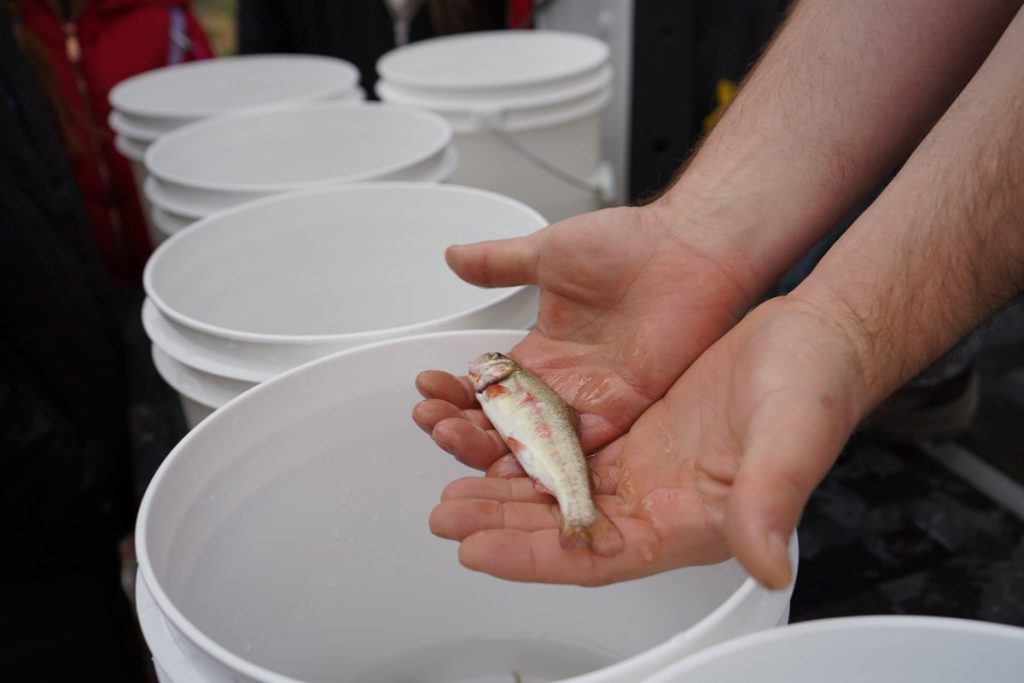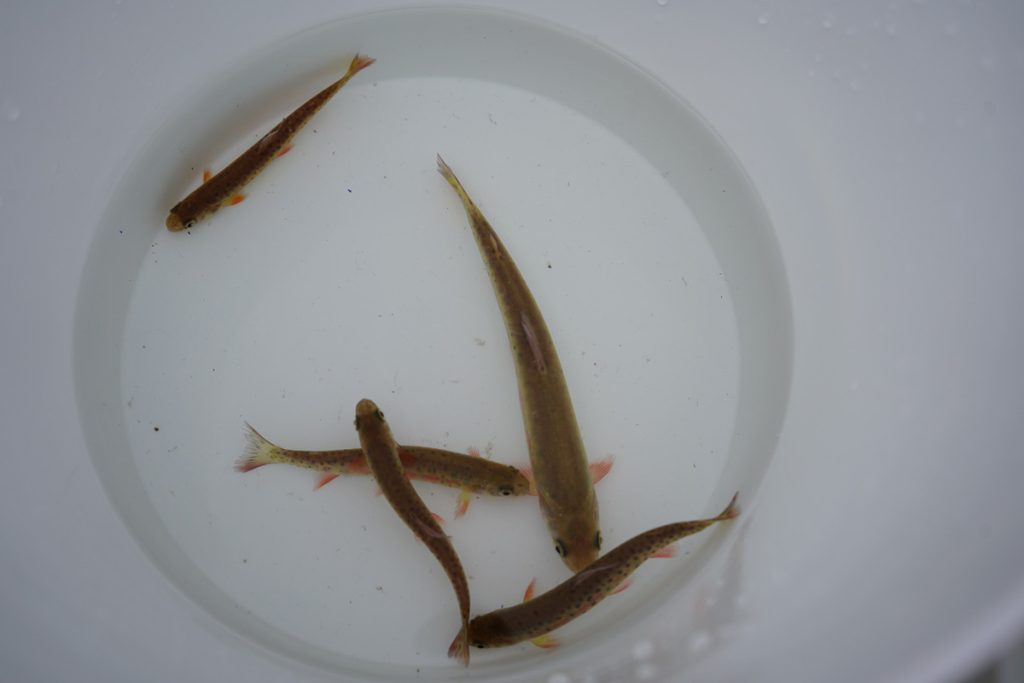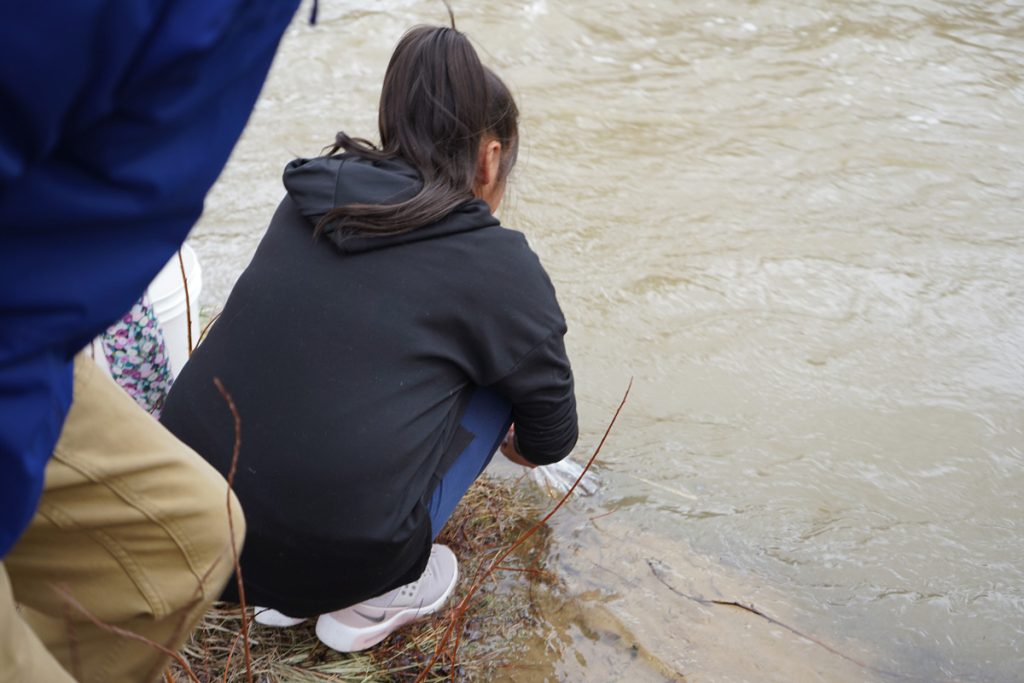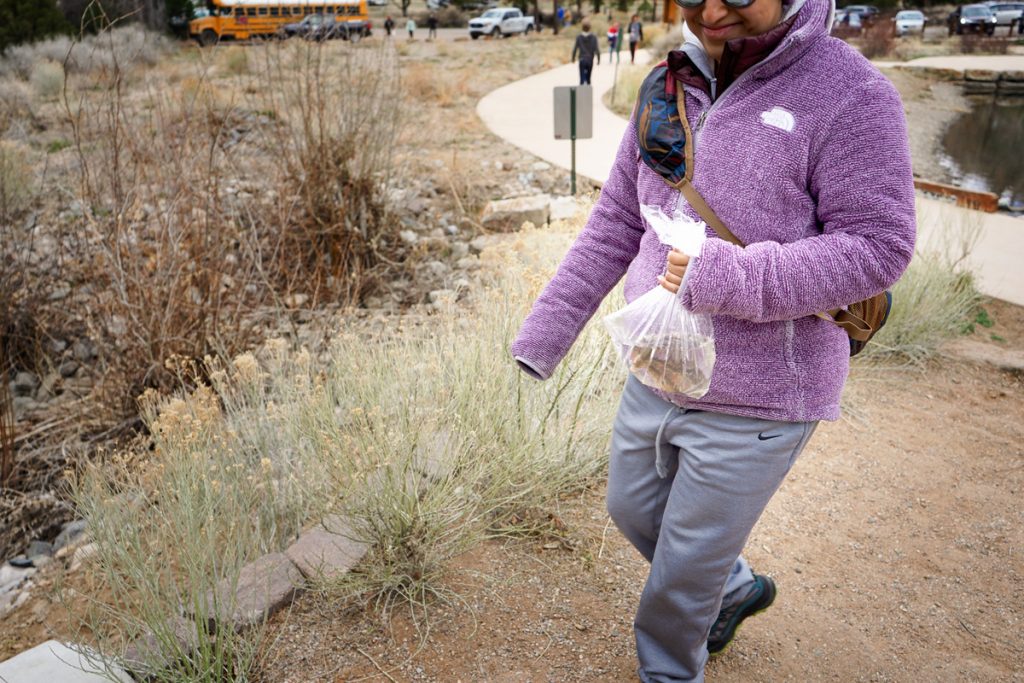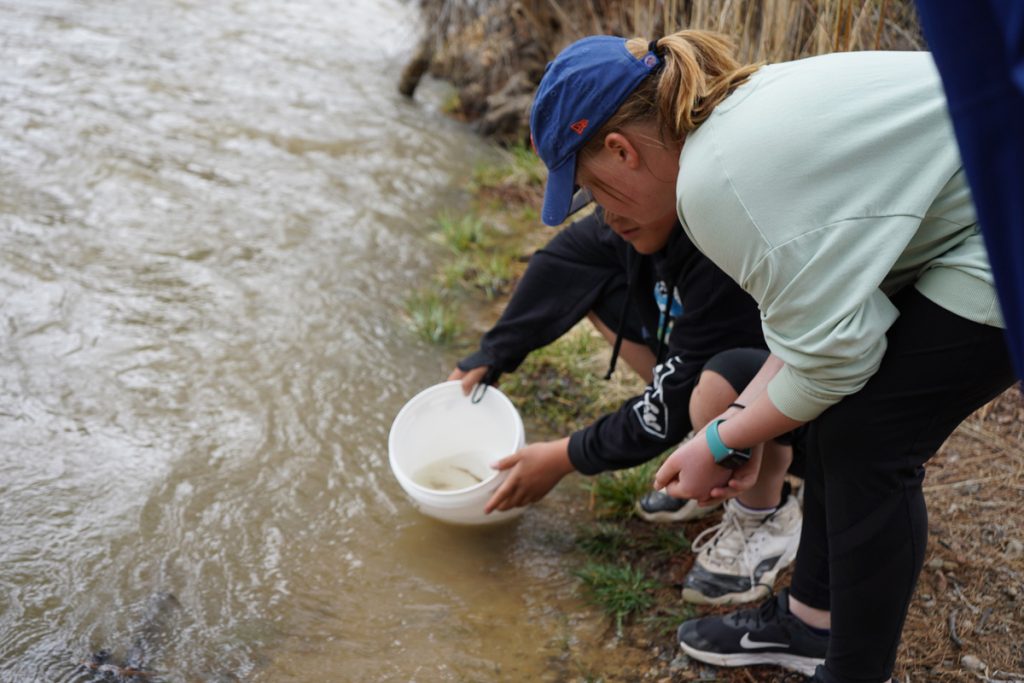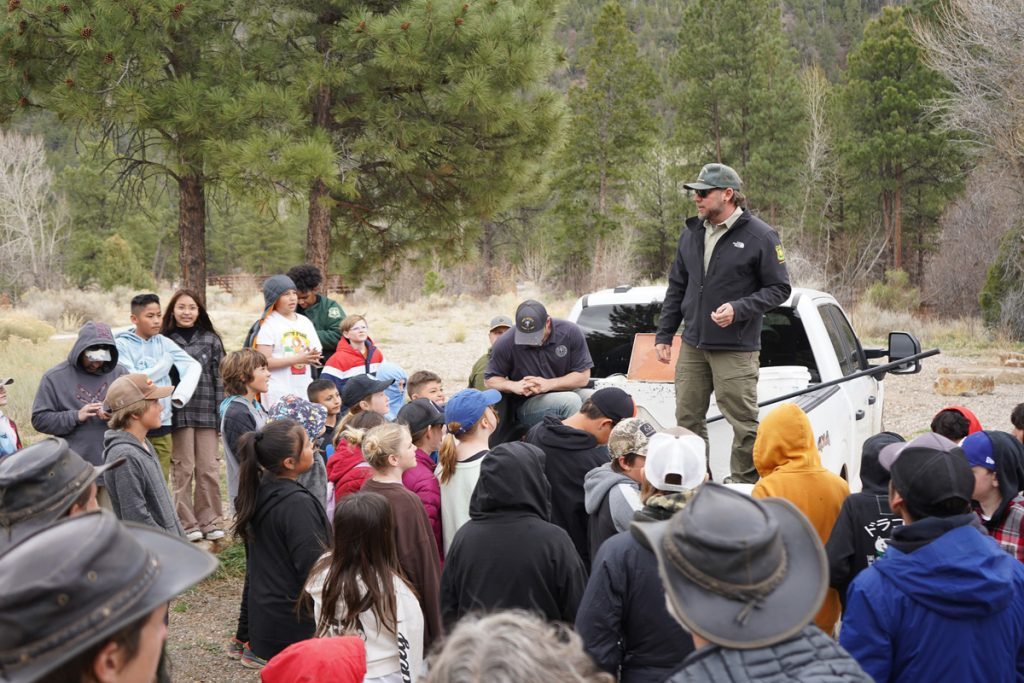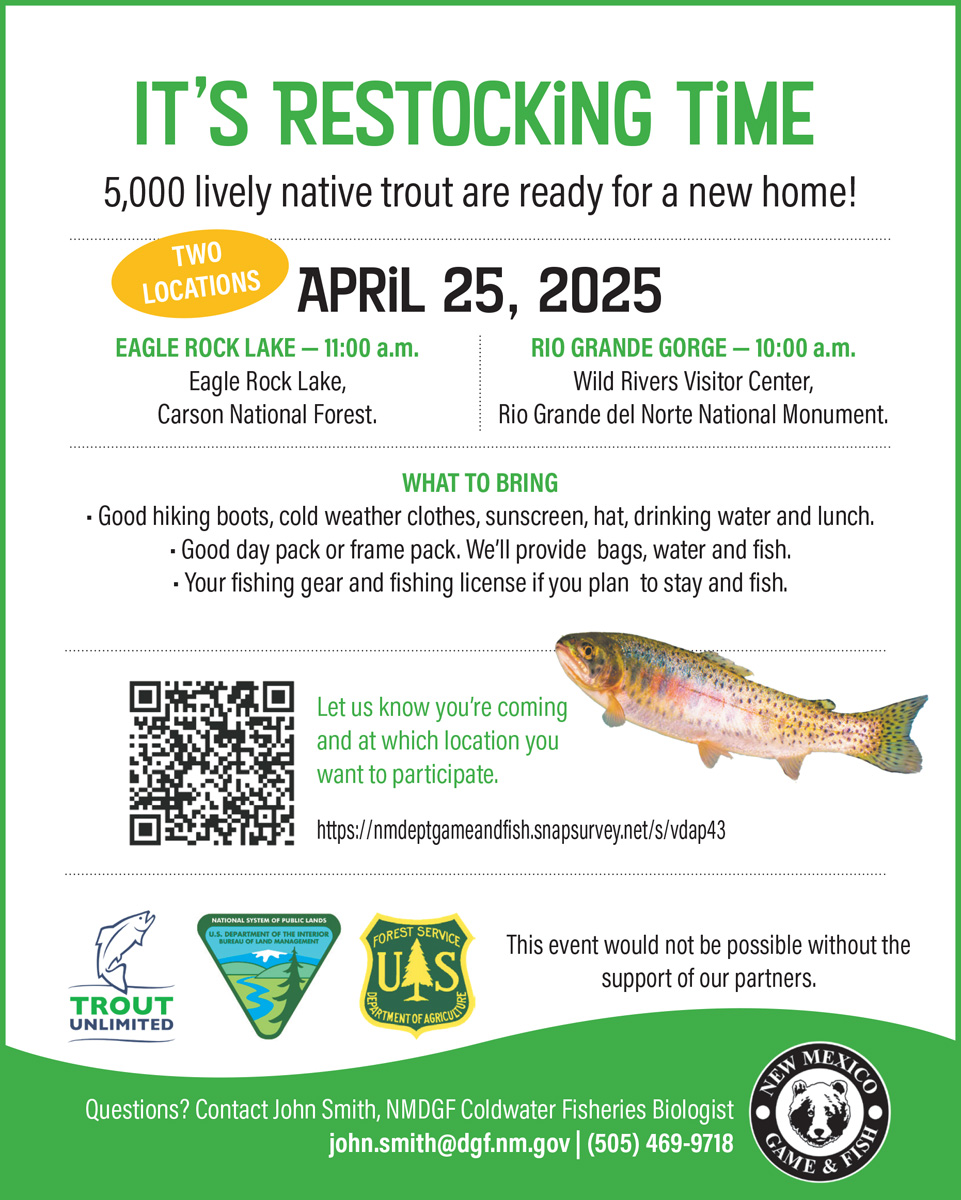It’s that time of year again, when native trout fans from around our great state come together at the Rio Grande del Norte National Monument to give thousands of spunky Rio Grande cutthroat trout a chance to ensure their species will be with us through the future.
On Friday, April 25, the New Mexico Department of Game and Fish, with the support of the U.S. Bureau of Land Management and the U.S. Forest Service, will bring two trucks full of baby cutthroat trout to Big Arsenic campground and Eagle Rock Lake, where volunteers will transport sturdy plastic bags containing oxygenated water and trout fingerlings into the Rio Grande gorge or the Red River near Eagle Rock. The event will begin at 10 a.m. at the Wild Rivers Visitor Center, where participants will get some background and safety information from the hosting agencies before delivering their precious trout cargo to their new homes. The Eagle Rock portion of the event will begin at 11 a.m.
For the gorge portion of the event, young and older participants should come prepared for a rigorous hike, especially the climb out of the canyon. Plenty of water is a must in our dry climate, and plenty of snacks and a lunch to keep your energy level high. Being in late April, the event may coincide with the annual caddis hatch on the Rio, so bring a fly rod and expect a great day of fishing. Flies like the elk hair caddis, hare’s ear, and renegade should be all you need to catch plenty of fish in the Rio Grande.
When this event was initiated several years ago, the idea behind it was to simply raise awareness of how special our state fish was: that the Rio Grande Cutthroat Trout exists nowhere else on earth but in the streams originating in the mountains of northern New Mexico and southern Colorado. Participants in the annual stocking not only saw but had to care for young fish that evolved here over millions of years. We wanted northern New Mexicans to be proud of that natural heritage.
We hadn’t considered this event to be much more than a feel-good exercise; we expected the baby cutthroats to survive for days or weeks, and then be eaten by the Rio’s brown trout, rainbows, and northern pike, or to perish in some other way. But that is not what happened. Over the years, plenty of the young trout have not only survived in the river’s competitive ecosystem, but thrived. Today it is not uncommon to catch adult cutthroat in the Rio Grande, some as large as 15 inches, suggesting that even larger cutthroat are doing well in the depths of the river’s life-sustaining currents. Some of these fish are regularly caught (and hopefully released) as far down as Pilar, and as far up as Sunshine, miles away from where they were originally stocked.
What this means is that the stocking event on April 25 should be viewed as a very real investment in our native trout’s future. Which also means that every measure should be taken to ensure that the babies survive the hike, a period of about 30 minutes when they are the most vulnerable. When the Game and Fish officials prepare your fish, they will inject extra oxygen into the bag, a finite supply that will be consumed by your precious cargo of fish. In other words, there’s not much time to waste on your hike to the river. Get your bag to the river as quickly as you can without twisting an ankle. Save your snacking and photo-taking for a leisurely walk out of the gorge. When you reach the river, place your bag in the water for several minutes, allowing the temperature of the bag to adjust to the river water.
Don’t pour the fish into the river. Simply open the bag underwater and let your babies find their way out of it on their own. Then watch in wonder as they start feeding on tiny insects, as they explore their new home.
